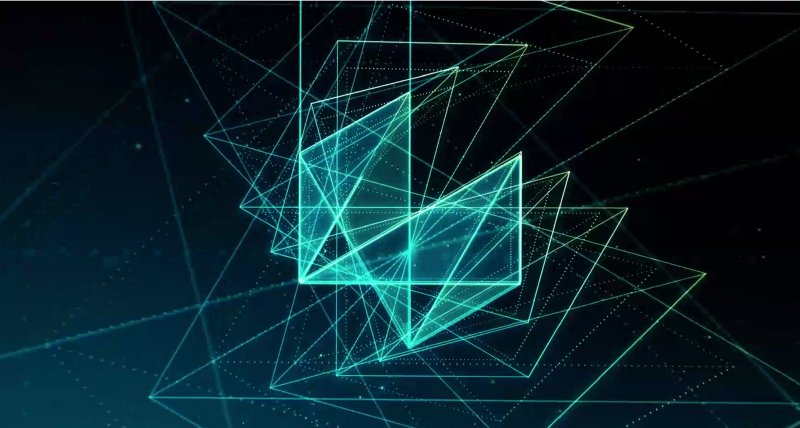In this episode of HxGN Radio, Javier Norro, VP of Product Management discusses how R-evolution, Powered by Hexagon, is combining digital reality solutions from Hexagon and partner portfolios to create blueprints for green tech projects.
BK: Welcome to HxGN Radio. My name is Brian, and in today’s podcast, we’re discussing Hexagon R-evolution’s creation of technical blueprints that are being applied in green-tech projects.
Joining me today is Javier Norro, VP of product management of R-evolution. Javier, thanks for joining me. Appreciate it.
JN: Thanks for having me.
BK: Yeah. I appreciate it. This is great. We’re—once again, I love saying this—we’re in person, we’re talking face to face. No more… Well, we’ll have to probably go back virtual at some point, but we get this wonderful opportunity.
Tell us about yourself and what you do, and also, what are you nerding out on? What are you excited about right now in life?
JN: Mm, yeah. One thing I love doing actually is music.
BK: Oh.
JN: I play music as a big amateur, I love playing different kind of instruments. I don’t play any instrument well, but it’s fun to get experience and sounds of that. And I love nature. I live in Sweden. People think Sweden is cold, which it is sometimes, especially in winter. But then the nature is fantastic because you just go out, get the feeling of the ice, of the snow. And in summer it is like paradise. Water gets up to 24 degrees [Celsius], which you may not think that about Sweden. And you can do a lot of things, kayaking, going sailing with friends. I mean, it’s just fantastic.
BK: That’s incredible.
So, you mentioned music. You play a lot of instruments. You’re not like a master of one particularly, but you just like to learn them all? I mean, do you have a favourite one you enjoy, or are you kind of like, “Hey, I’ll play anything”?
JN: I used to play… Well, guitar is the one I’ve played the most.
BK: Okay.
JN: But again, I mean, I never played too well. I played in a band, punk rock band when I was 19. That was fun.
BK: Nice.
JN: So, imagine my skills then. And then now I’m learning piano for two years on my own and that’s the one I played the most. But I play mandolin, ukulele, and so on. I even had a sitar, that I played three times. It was taking 20 minutes just to tune it. So, yeah, that was tough.
BK: Got a little annoying, yeah. I get that. But a sitar would be really neat to play. I’m a pianist myself. I’ve got a little bit of drumming under me. But my problem is as a pianist when you’re pedalling—
JN: Yeah.
BK: —you pedal off beat so that it doesn’t sound like you’re pedalling. And so, when you’re playing drums, you want to pedal on beat, and I cannot get my foot to match up. It’s just the way it works. But man, I love the actual drumming from the arms perspective, the hands and stuff.
JN: Yeah, yeah, yeah.
BK: So, I’ve gotten that down. But bagpipes or a didgeridoo would be my next.
JN: Bagpipe. I played bagpipe with a friend actually a couple of times. It was in a festival in Spain, in Northeast Ortigueira, Celtic music. Fantastic place, he let me play so I could make some melodies, but then you get so tired because you need to blow the thing.
BK: Yes.
JN: It’s crazy.
BK: It is. I think that’s what kind of dissuaded me a little bit from continuing, at least for now. It was exhausting.
JN: Yeah.
BK: But it’s fun.
All right. Well, let’s talk about R-evolution. It’s a relatively new company. It was launched in February of 2021, right?
JN: Yeah, correct.
BK: Launched back then, all right. So, tell us more about it. What is it and how does R-evolution work with Hexagon and what are you doing from a technical aspect as well? A lot of questions there but go ahead and tell us all about it.
JN: Yeah. I mean the first thing about R-evolution, we have a really big purpose. We are trying to save the world and that’s a big thing and therefore we cannot do it alone. First, we’re working with the whole Hexagon and in addition, we’re engaging with partners. And how we want to save the world? Everyone knows that now green tech in general is much more expensive than the alternative. As Hexagon we are making everything more efficient so we can apply all of that in techs in green tech. Then we could actually decrease this green premium quite a lot. And that’s what we do.
And then our business model. We really believe that if we want to make something happen, it has to be connected to business. That’s our life, right? And then what we do is we look into projects; we make sure they are actually profitable and that will create an investment loop for us because any new revenue we get we invest in new projects.
And these investments, as I mentioned, they’re in two ways. On one end we invest in initiatives. This initiative is like, we buy assets such as solar farm, we have one in the south of Spain. A very nice place. It’s in Malaga. You would love it.
BK: Nice.
JN: And there actually what we do is we bought the place and then we started deploying technology from Hexagon.
BK: Okay.
JN: And our approach is we first do and then we document. Instead of doing long business cases, we take a fail fast approach. We deploy a product from Hexagon. Does it make sense? Then we continue and use it.
BK: Yeah, yeah.
JN: And then with this approach, we deploy different technologies and then we get the site much more efficient for us. And then we do a strong promotion to reach scale, if you just do it in one site, then you don’t go really far. But when you get other people owning sites to replicate what you’ve done in yours, then it becomes super exciting. Because then you get, we have a 16 MWp park, but then if you go beyond that, if you go to thousands of gigawatts, then everything becomes much more powerful. We are doing this in wind energy and other type of projects.
We have a project now in Bahamas with a partner, Beneath the Waves, which is super interesting. We are measuring the seabed, trying to understand where the seagrass is. And the whole purpose is that seagrass is absorbing a lot of CO2, like 10 times more than a rainforest. Problem is that people don’t know that, people don’t see that—
BK: Yeah, yeah.
JN: —because it’s underwater. And the problem is that every year the seagrass is decreasing unfortunately 7% and that’s really sad.
BK: Yeah.
JN: Then what we do, we make sure that we visualise it and working with the government together, we actually can make sure that they know what’s going on. They know what they have, and they can actually have a project to take care of the place and make sure that no boats, pollution and stuff like that are actually affecting the seagrass. And by doing that, they can have a really strong opportunity to save the planet on their own.
BK: Yes. Huh. Interesting. So, you’re saying that by helping these governments to minimise traffic, essentially and pollution, at least in that area of water—
JN: Yeah.
BK: —you’re seeing a global impact. Do you have any idea what the impact is?
JN: Yeah. Well, that is something we are studying right now.
BK: Okay.
JN: We’re working together with MIT in emission. The project is about we fly with a Bathymetric LIDAR, and with that, we actually make sure that we understand where the places are that the seagrass is.
And then the team there Beneath the Waves is taking actual real samples. They go deep dive and take them from the ground. And then we are studying how much CO2 is it in actual space.
BK: Wow.
JN: So, that’s what we are doing right now.
BK: Interesting. Wow. That’s cool.
JN: And it’s a big potential actually.
BK: Yeah, absolutely. Wow. That’s cool.
So, now I know you use a technical blueprint, so explain your technical blueprint. What does it look like? What does it do? All that.
JN: As I mentioned that we are the plain different type of product in our sites. Like the case in solar, where we have, for instance, the BLK family, we’ve done like the laser scanner of the place and so on. But we also have software solutions. At the backend we have a UI, really nice, so you can see what’s going on in the site. And most of these things are applying to people working as operation and maintenance. But then we work through the whole life cycle. Things start much earlier, start from planning and design of a site. Then it goes to construction, then operation maintenance, optimisation, and then finally the commissioning. Throughout that life cycle, then you get a lot of opportunities and a lot of capabilities that different actors can take. Let’s say the first phase are plan, design and construction, in those phases is an EPC usually. So, what tools would they need to make their project much more efficient? Because it takes really long to run one of these projects. If you can do it much faster and you can have a digital twin that goes from planning down to the commissioning, then you can accelerate the full project. You can know much better what you have and then you can do the real handover between EPC to the asset owner and then the owner and so on. That’s the concept of our blueprint.
And then how do we use it? That’s the most cool part, because it’s a tool to make sure that people build their own insights. As an example, we can have a discussion with EPCs, a consultative approach, trying to understand where do they see their biggest pain points. And then we use this blueprint that has many different capabilities from Hexagon and partners listed. And then we can have a conversation. You work mostly on this planning and design. Then we focus there, while they can have also an understanding of the end-to-end cycle. And then, when we deep dive, then we understand what are the capabilities they really need. And then when we understand that we can move on and go to the next level. Those capabilities match to Hexagon and partners product. And then we say, “Okay, so for this, you have this product. For that you have this other product. And even if you combine these two, then you have even a higher value.” And then we take more of a value discussion on different products that match to those capabilities. At the end, when you go through this discussion with a customer, the customer will understand what they need, will understand much better their pain points, and then they will have an idea of what product could actually solve that pain point.
And then this will go to the next level, which is when you engage more on the go to market, like how do you connect? And in this case, we, as R-evolution today, we are defining these capabilities match into products. And then few of them, we test in our own site. But then we connect to the actual account managers for the different division from Hexagon or partners. We don’t resell. The process we work is we engage with actual account manager from different divisions or partners.
BK: Okay.
JN: And then we do a lot of promotion in our channels and events and so on. That’s how we work with that.
BK: That’s great.
So, what sort of industries can benefit from this?
JN: Right now, we have two main blueprints. One goes for renewables and that applies for everything around solar, wind and also storage, such as batteries. And then we connect all these different products. For instance, with batteries, we have a simulation solution that actually can help you to figure out how the air flows in a battery, so you can actually make it even better. Or how do you do site planning.
BK: Yeah.
JN: Then we have also a really nice solution that help you out to understand where the wind blows first or best. All of those things we’re actually doing and that’s for renewable. Again, solar, wind and storage.
And then we’ve done another one that connects to actual green hydrogen. And as you know, green hydrogen is almost a hype. I would say, everyone’s talking about it. We need to do something about it. And it has huge potential. There, we also have the same concept. We have the same concept for the whole planning, design and construction and so on for a green hydrogen facility. And this thing could even be applied to the actual fuel cells. So, there we do the exact same concept. We connect with different capabilities and connect to different products then from Hexagon or partners. We did this blueprint together with a partner in Australia, H2U.
BK: Yeah.
JN: And we launched it early this year. So that’s how we do it.
BK: That’s incredible. I’m really impressed with the application you’ve got with this. That’s neat.
All right. So, tell us a little bit more about like, you mentioned some of the solutions you’re doing, but what is your future goal for this? What are you trying to achieve? And then also what’s the plan for scaling it?
JN: Yeah. Our ambition, as I mentioned before, is to scale what we are doing. To make sure that it is not just us who own a site who can actually get benefits of Hexagon and partner technology. What we want is that everyone who is engaging in all of these different kinds of projects, that they actually get an idea with what we are doing and then they replicate it. And obviously they won’t take everything. Well, some do, like in the case for this green hydrogen project that I mentioned. But in other cases, they just take one capability or one area. The whole goal is that they actually know what they need, and we help them go through that process. And then they can get those products that will help them in their journey. Because once more we are after decreasing the cost of green energy or green tech in general. By doing that, then it will be more adoption. And then the energy transition will happen faster. Or if we go to other type of projects, because these projects I mentioned are the ones we are looking into now and executing on, but we have other areas that we are looking into, which by the way, those new areas, we use our other arm that I mentioned earlier for this venture capital arm that we have. We engage with start-ups and by doing that, we help them to hopefully materialise their next breakthrough. But we also learn from them because start-ups are super smart people with a lot of passion making something big happen. If you can get there close to them and help them out, you get a lot of help from them. Because you get that passion and then passion by passion is huge impact, right?
BK: Yeah, yeah.
JN: So that’s what we are doing actually.
BK: That is cool. I appreciate this.
Well, I really appreciate you sharing this too. I’m curious where we can go get more information on this too. And yeah, first of all, let’s do that.
JN: Yeah. You can find out more in our web page, its R-evolution.com.
BK: Okay.
JN: And then you can also follow us in LinkedIn. Searching for our company again, r-evolution.com.
BK: Okay.
JN: In those, we are publishing a lot of the things we are doing. You can already have a view of our solar project, wind project, hydrogen. And this also the Bahamas project I mentioned before, so that you can get a lot of data.
Then if you want to know more, or if you want to engage, you can also contact us directly through the page. There you have also a contact form and we are super happy to get to know you.
BK: Excellent.
Any final thoughts then that we should know? Any pieces of advice?
JN: Yeah. Well, I mean, everyone knows, we have a huge challenge ahead, with the climate change. But the whole point is that we need to take an action and it’s not simple, right? You don’t need to wait for anyone else to do it. We need to do it together. And we are taking this step, but alone, we cannot do it. We really need you guys. So please engage. Do your own little things at home as well because we have a big deal ahead of us, but we are still on time to fix it.
BK: Yeah. See, and I appreciate that, and I appreciate that you’re leading the change as well and doing it in a way that actually makes sense. It’s not so, “Well, let’s just see what happens.” But I love how you’re pulling the data together in a very, very specific way that’s also predictable too.
JN: Exactly.
BK: So that’s wonderful.
Well, Javier, thank you. I mean, this was really incredible, and I appreciate it. Wish we could talk more actually, but really appreciate you sharing what you shared and thank you for taking the time.
JN: Thanks.
BK: Javier Norro, VP of product management of R-evolution, thank you for joining us today on HxGN Radio.
For more information and also to listen to additional episodes, head over to iTunes, Spotify, or SoundCloud. And you can visit hxgnspotlight.com for more information and more storeys from Hexagon.
Thanks again for listening and have a wonderful day.
















